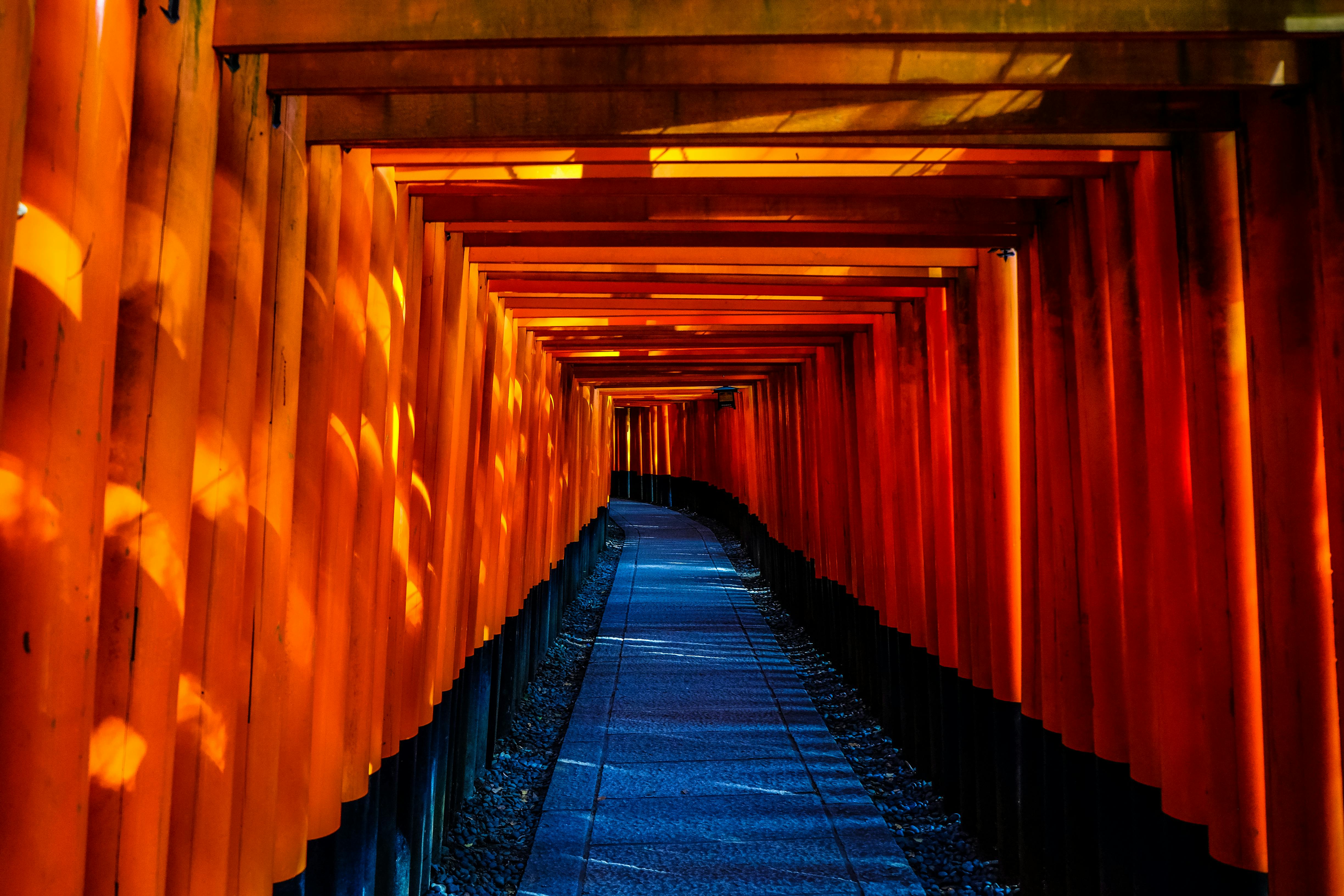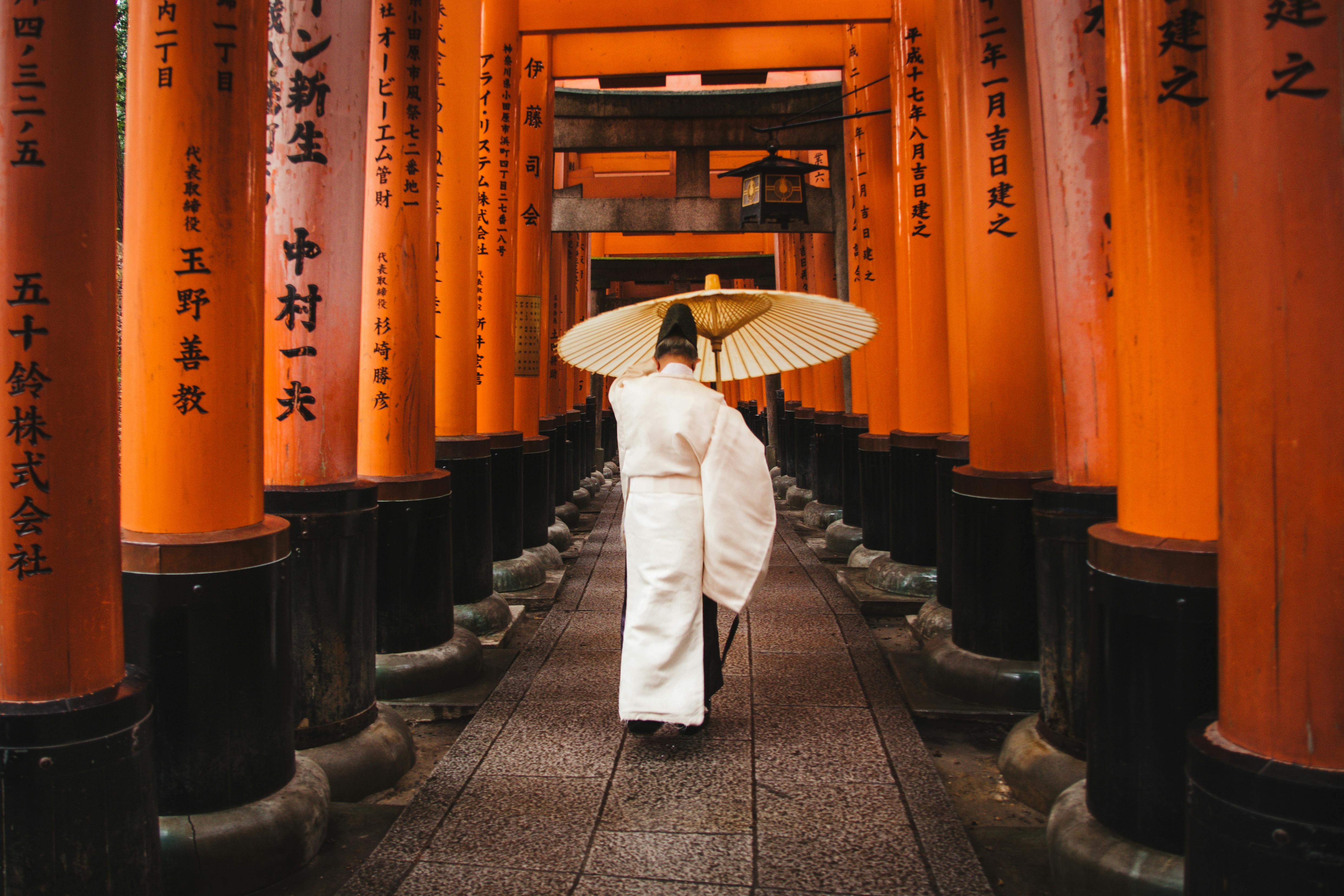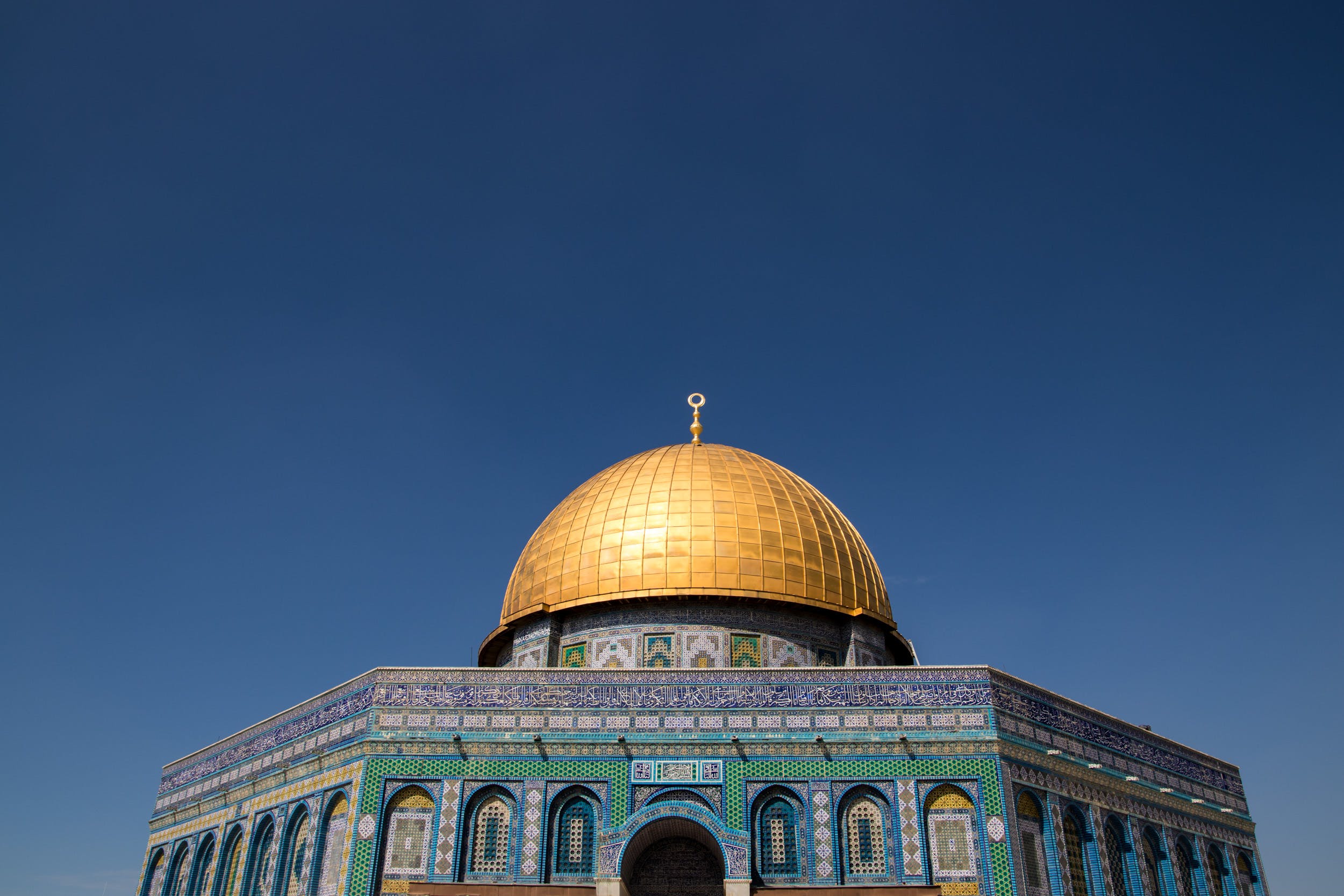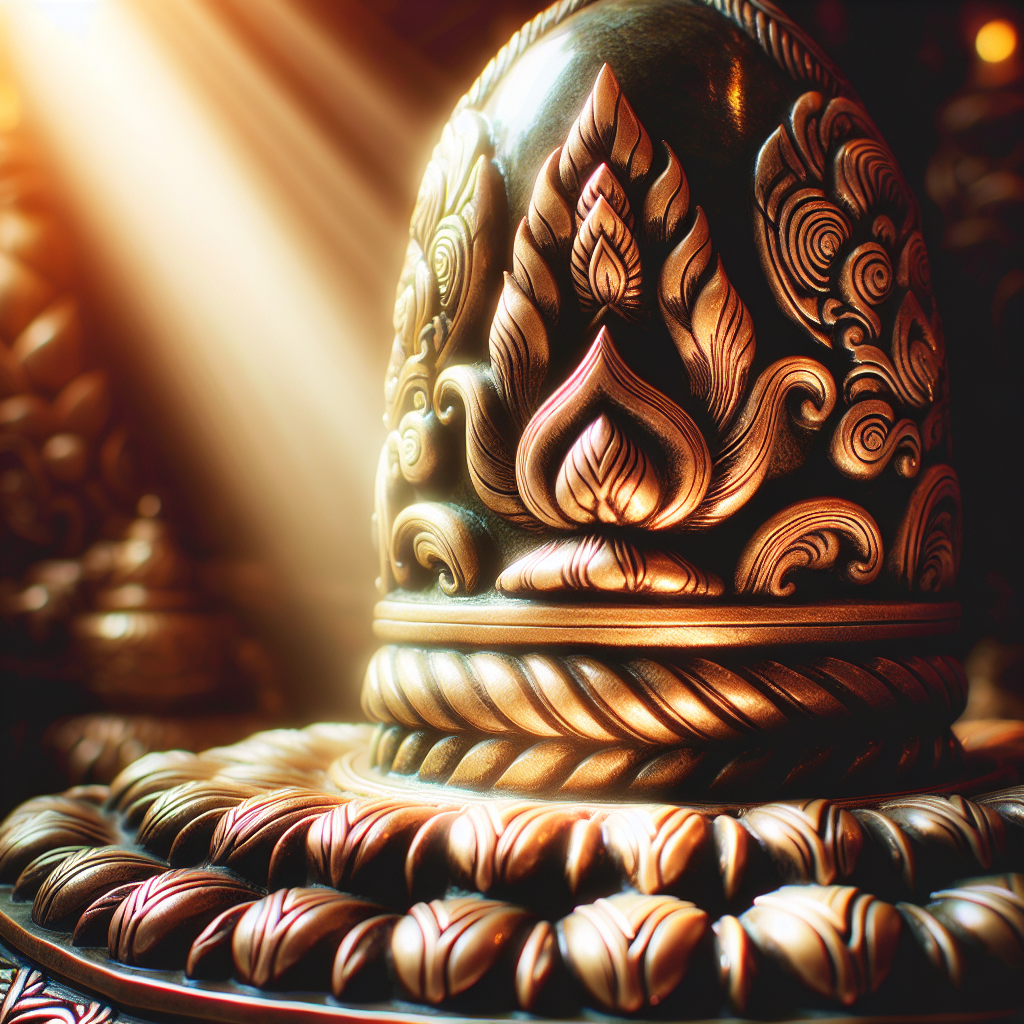Join us on a remarkable spiritual expedition as we delve into the enchanting realm of India’s sacred destinations. With IndianCulture.com as your guide, prepare to uncover the profound beauty of religious tourism, where the captivating blend of history, faith, and culture intertwine. Our journey begins with a visit to the revered Baba Baidyanath Dham, a sacred shrine nestled in the heart of Deoghar. With its rich history and profound healing qualities, this holy site beckons pilgrims from far and wide, promising a transformative experience like no other.

History of Baba Baidyanath Dham
Ancient legends and mythology
Baba Baidyanath Dham, one of the most revered Hindu pilgrimage sites in India, has a rich history steeped in ancient legends and mythology. According to folklore, it is believed that Lord Ravana, the demon king of Lanka and a great devotee of Lord Shiva, brought the divine lingam (symbol of Lord Shiva) to this site. The lingam is believed to have healing powers and is said to possess the ability to cure various ailments.
Construction of the temple
The construction of the original temple of Baba Baidyanath Dham dates back to ancient times. It is said to have been built by Lord Ravana himself, under the guidance of Lord Shiva. The temple complex was meticulously designed and constructed, showcasing the architectural brilliance prevalent during that era. The shrine has undergone several renovations and expansions over the centuries to accommodate the growing number of devotees.
Renovation and expansion
Throughout history, Baba Baidyanath Dham has undergone numerous renovations and expansions to preserve its grandeur and accommodate the increasing influx of pilgrims. The most significant renovation was carried out by Raja Puran Mal, a devotee and a noble ruler, during the 18th century. He constructed a beautiful gateway and added several other structures within the temple complex, enhancing its architectural splendor.
Significance of the Shrine
Religious importance
Baba Baidyanath Dham is considered one of the twelve Jyotirlingas, which are the most sacred abodes of Lord Shiva. It holds immense religious significance for Hindus all over the world. Devotees believe that a pilgrimage to this shrine can cleanse their souls and bring them closer to Lord Shiva, the destroyer of evil and the epitome of divine power. The temple attracts millions of devotees every year, who come from far and wide to seek blessings and offer their prayers.
Healing powers
One of the primary reasons behind the popularity of Baba Baidyanath Dham is its association with healing powers. It is widely believed that the holy lingam housed within the shrine possesses medicinal properties and has the ability to cure various ailments. Devotees suffering from illnesses often visit the temple with hopes of receiving divine intervention and experiencing miraculous healing. The faith and devotion of the pilgrims create an atmosphere charged with positive energy and an unwavering belief in the powers of the temple.
Fulfillment of wishes
The temple is renowned for its ability to fulfill the wishes of devotees. It is believed that sincere prayers offered here are answered by Lord Shiva himself. People flock to Baba Baidyanath Dham to seek fulfillment of their desires, be it material, emotional, or spiritual. The temple complex reverberates with the sounds of fervent prayers and chants as devotees pour their hearts out, hoping for their wishes to come true.

Architecture and Design
Temple complex
The architectural magnificence of Baba Baidyanath Dham is awe-inspiring. The temple complex is spread over a vast area and is adorned with intricately carved walls, pillars, and domes. The use of stone and terracotta adds to the grandeur of the structures. Beautifully manicured gardens and courtyards provide a serene and tranquil ambiance, perfect for spiritual contemplation.
Main shrine
The main shrine of Baba Baidyanath Dham houses the sacred lingam of Lord Shiva. The lingam is made of solid gold and is believed to have been installed by Lord Ravana himself. The sanctum sanctorum is a sight to behold, with its ancient stone walls and ornate decorations. The atmosphere inside the main shrine is charged with spirituality, and devotees offer their prayers and seek blessings from Lord Shiva.
Other structures
Apart from the main shrine, the temple complex of Baba Baidyanath Dham comprises various other structures that enhance the spiritual experience of the devotees. These include smaller shrines dedicated to other Hindu deities, meditation halls, and holy ponds where devotees can bathe before entering the temple. The architecture of these structures reflects the rich cultural heritage of the region and provides a glimpse into the glorious past of the temple.
Annual Festivals and Rituals
Shravan Mela
Shravan Mela, also known as the Shravani Mela, is an annual festival celebrated with great fervor and enthusiasm at Baba Baidyanath Dham. It takes place during the holy month of Shravan (July-August) as per the Hindu calendar. Devotees from all over the country undertake a long and arduous journey to reach the temple, carrying water from the Ganges in small pots called ‘kanwars.’ This traditional ritual is believed to please Lord Shiva and is considered highly auspicious.
Navratri Celebrations
Navratri, meaning ‘nine nights,’ is another major festival celebrated at Baba Baidyanath Dham. It commemorates the victory of goddess Durga over the buffalo demon, Mahishasura. During Navratri, the temple complex comes alive with vibrant decorations, devotional songs, and elaborate processions. Devotees observe fasts, perform traditional dances like Garba and Dandiya, and offer prayers to Goddess Durga for blessings and protection.
Maha Shivaratri
Maha Shivaratri, meaning ‘the great night of Lord Shiva,’ is one of the most significant festivals observed at Baba Baidyanath Dham. Devotees flock to the temple on this auspicious day to seek the blessings of Lord Shiva. The temple remains open all night, and special ceremonies and rituals are performed in the main shrine. Devotees engage in continuous prayers, chant mantras, and observe fasting to honor Lord Shiva and attain spiritual enlightenment.

Pilgrimage Experience at Baba Baidyanath Dham
Reaching Deoghar
Reaching Deoghar, the holy city where Baba Baidyanath Dham is located, is an essential part of the pilgrimage experience. Situated in the state of Jharkhand, Deoghar is well-connected by air, rail, and road networks. Devotees can choose to fly to nearby airports or take trains or buses to reach Deoghar. The journey to the city is often considered a sacred endeavor in itself, as pilgrims embark on a spiritual quest to seek blessings from Baba Baidyanath.
Accommodation and Facilities
Deoghar offers a range of accommodation options for pilgrims visiting Baba Baidyanath Dham. From simple guesthouses to luxurious hotels, there is something to suit every budget and preference. Many ashrams and dharamshalas also provide free or low-cost accommodation for devotees. The city is equipped with modern amenities such as hospitals, restaurants, and transportation services to ensure that the pilgrims have a comfortable and hassle-free stay.
Temple timings and rituals
Baba Baidyanath Dham opens its doors to devotees early in the morning and remains accessible until late in the evening. The temple follows a fixed schedule for daily rituals and ceremonies, which include elaborate puja (worship), aarti (prayer), and abhishekam (ritual bath of the lingam). Devotees can participate in these rituals and seek the blessings of Lord Shiva. It is advisable to check the temple timings in advance to plan the visit accordingly.
Legends and Mythology
The story of Ravana and the demon king
According to the ancient legends, when Ravana, the mighty demon king of Lanka, acquired the lingam from Lord Shiva, he wanted to take it to his kingdom. However, Lord Vishnu intervened and tricked Ravana, causing him to accidentally drop the lingam in Deoghar. This is believed to be the spot where Baba Baidyanath Dham was established, and the lingam remained there ever since. Ravana’s devotion and his desire to acquire supreme power are seen as a symbol of unwavering faith and determination.
The story of Lord Shiva and Sati
Another legend associated with Baba Baidyanath Dham revolves around Lord Shiva and his first wife, Sati. Sati was the daughter of King Daksha, who held a grand yagna (fire sacrifice) but did not invite Lord Shiva. Sati, deeply hurt by this disrespect, immolated herself in the fire of the yagna. Enraged by the loss of his beloved wife, Lord Shiva started performing the Tandava, the cosmic dance of destruction. It is said that a part of Sati’s body fell at the present location of Baba Baidyanath Dham, making it a significant place of worship.
The story of Ruru and the cure
According to a popular myth, Ruru, a sage, was cursed by a snake and suffered excruciating pain. He wandered in search of a cure and eventually reached the site of Baba Baidyanath Dham. By taking a dip in the holy pond and offering prayers to Lord Shiva, Ruru was miraculously cured. This incident sparked the belief in the healing powers of the lingam at the temple, and it has since become a sanctuary for devotees seeking relief from various ailments.
Celebrations and Devotional Practices
Daily puja and aarti
Every day, Baba Baidyanath Dham reverberates with the sounds of sacred chants and prayers as devotees gather to witness the daily puja and aarti. The priests perform elaborate rituals, offering flowers, incense, and sacred items to Lord Shiva. The powerful vibrations created by the mantras and the devotion of the worshippers create an atmosphere charged with spirituality and divine energy.
Offerings and rituals
Devotees visiting Baba Baidyanath Dham offer a variety of offerings and perform rituals to seek the blessings of the deity. Coconuts, flowers, milk, honey, and sacred ashes are commonly offered as a mark of devotion. Some devotees opt for more elaborate rituals, such as the Rudrabhishekam, where they pour water, milk, ghee, and other sacred substances over the lingam while chanting prayers.
Devotee testimonials
Many devotees claim to have experienced miraculous healings and blessings after visiting Baba Baidyanath Dham. They speak of ailments being cured, wishes being fulfilled, and a deep sense of spiritual awakening. Testimonials of devotees are often shared, fueling the faith of others and inspiring them to undertake the sacred pilgrimage.
Local Attractions and Activities
Naulakha Mandir
Apart from Baba Baidyanath Dham, Deoghar offers various other attractions for tourists and pilgrims. One such notable place is the Naulakha Mandir, a magnificent temple built in 1461 AD. The temple is adorned with precious jewels and intricate carvings, capturing the fine architectural craftsmanship of that era. It is dedicated to Radha-Krishna and is a popular spot for tourists seeking a glimpse of the region’s cultural heritage.
Basukinath Temple
Located a few kilometers from Baba Baidyanath Dham, the Basukinath Temple is another significant religious site in Deoghar. It is believed to be the abode of Lord Shiva in the form of Basukinath, the king of serpents. Devotees throng to this temple to seek blessings and offer prayers for the well-being and prosperity of their families.
Shivganga
Shivganga, a picturesque waterfall located near Deoghar, is a popular tourist spot and a perfect getaway for adventure enthusiasts. Surrounded by lush greenery and pristine natural beauty, Shivganga offers a serene and tranquil environment for visitors. People often visit this place to seek solace, meditate, or simply relax amidst nature’s embrace.
Preservation and Conservation Efforts
Restoration projects
Recognizing the historical and cultural significance of Baba Baidyanath Dham, various restoration projects have been undertaken to preserve and restore the temple complex. These projects aim to maintain the architectural integrity of the structures, protect the ancient artifacts, and conserve the heritage of the shrine for future generations. The restoration efforts are carried out with meticulous care, ensuring that the original charm and grandeur of the temple are retained.
Protection of cultural heritage
Efforts are also being made to protect the cultural heritage associated with Baba Baidyanath Dham. Steps have been taken to record and document the ancient customs, rituals, and stories associated with the temple. This documentation serves as a valuable resource for scholars, researchers, and devotees interested in understanding the rich cultural heritage of the shrine.
Sustainable tourism initiatives
In recent years, sustainable tourism initiatives have been implemented to ensure the responsible and ethical development of tourism in and around Baba Baidyanath Dham. These initiatives focus on promoting eco-friendly practices, minimizing the impact on the environment, and encouraging local engagement and empowerment. By fostering sustainable tourism, the aim is to preserve the sanctity of the pilgrimage site and support the local economy and community.
Conclusion
Baba Baidyanath Dham stands as a testament to the rich heritage, spiritual legacy, and cultural significance of India. Its ancient legends, healing powers, and religious importance have attracted devotees for centuries. The architectural brilliance of the temple complex, the grandeur of the main shrine, and the devotion of millions of pilgrims create an atmosphere charged with fervor and spirituality. The annual festivals and rituals, the pilgrimage experience, and the enchanting legends associated with the shrine make it a must-visit destination for all spiritual seekers. Baba Baidyanath Dham beckons us to embark on a transformative journey, a journey where faith, history, and divinity intertwine, inviting us to immerse ourselves in the timeless devotion and everlasting blessings of Lord Shiva. Visit Baba Baidyanath Dham and embrace the mystical allure of this extraordinary shrine.
